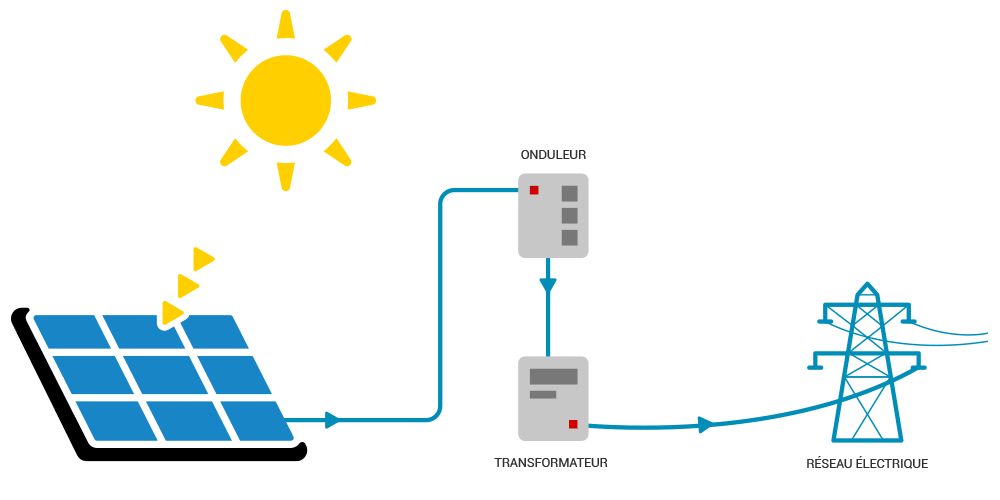History of photovoltaics
The first uses of solar power date back to ancient times. Sets of mirrors were used to harness the sun’s power to set fire to or melt things.
The photovoltaic effect was discovered in the mid-19th century but it was not put to use until 1916 when the first photovoltaic cell was created. Even then, the low yields observed made industrialisation unfeasible.
In fact, it was the conquest of space around the 1950s that enabled the development of this technology in order to make the shuttles launched into space independent. In 1958, the first satellite with a photovoltaic panel was sent into space.
The principle:
A photovoltaic cell consists of two silicon wafers, one doped with phosphorous which contains more electrons than silicon, and the other doped with boron, which contains fewer. This wafer assembly can then be incorporated into a battery which creates a magnetic field.
With sunlight, the photons extract electrons from the silicon which then migrate to the negative terminal of the battery. This creates an electric current.
Photovoltaic power plants are made up of:
- Photovoltaic panels which produce current when exposed to light.
- An inverter, which converts the direct current into alternating current.
- A transformer, which increases the voltage to that of the distribution grid.
Solar power is the most abundant renewable energy on earth, and the fastest to deploy. It is also the one for which technological innovation has been the most concentrated and which has seen, in recent years, the greatest productivity gains, making these facilities now highly competitive.
In figures
In 2024, electricity production from photovoltaic solar energy will amount to 24.5 TWh. Excluding self-consumption, this will account for 5.2% of French electricity consumption over the same period.
The objectives of the PPE (Pluriannual Energy Programme) are to double photovoltaic capacity by 2028.
ARE YOU A PROPERTY OWNER OR FARM OPERATOR?
UNITe provides the opportunity to increase the value of land (from 5 ha) by installing photovoltaic solar power plants on it. By renting your land to us, you will enjoy regular, guaranteed income for 30 years and play a part in the energy transition. We are flexible and we can adapt to your specific needs.



